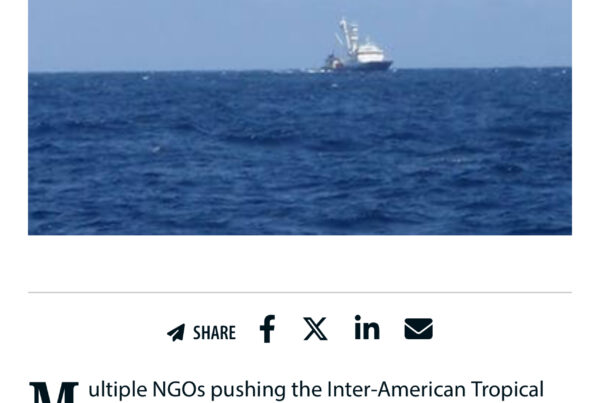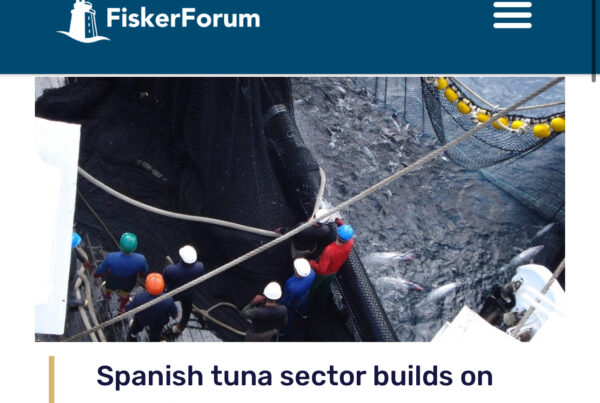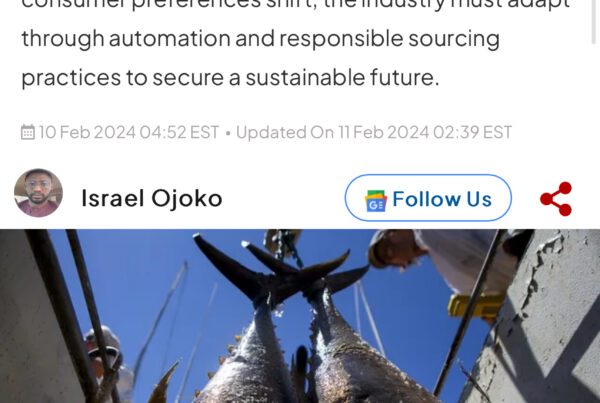As US Congress Debates Budget, Pacific Island Nations Are Watching With Concern
Six months after US President Joe Biden hosted over a dozen Pacific leaders and envoys at the White House and pledged generous funding, experts say the region is carefully watching for the follow-through as Congress haggles over slashing foreign aid.
Announced in September, the Pacific Partnership Strategy – intended to help the US catch up with China’s growing influence in the region – committed to spending more than US$800 million on priorities like climate change, fishing disputes and maritime security.
A majority of the funding was US$600 million in ramped-up aid for renewing the South Pacific Tuna Treaty, nearly tripling the US contribution to US$60 million annually for the next 10 years. Continue reading here (Source: Yahoo! Finance).
NOAA’s Annual ‘Status of Stocks’ Reports Incremental Improvements and Climate Challenges
Today, NOAA released the 2022 Status of Stocks report, providing a snapshot of the more than 490 fish stocks managed by NOAA Fisheries. Maintaining sustainable fisheries contributes significantly to the U.S. economy, provides important recreational opportunities and helps meet the growing challenge of increasing the nation’s seafood supply.
In 2022, U.S. fisheries data revealed that 93% of stocks are not subject to overfishing and 81% are not overfished. These numbers show slight improvements compared to the 2021 figures of 92% and 80%, respectively. Positive trends were seen this year with the number of stocks on the overfishing list decreasing by two stocks to 24, and the number of overfished stocks decreasing by three stocks to 48. Continue reading here (Source: National Oceanic and Atmospheric Administration).
ISSF Audit Finds 23 of 25 Seafood Companies Compliant with Sustainable Fishing Measures
Twenty-three of 25 companies partnered with the International Seafood Sustainability Foundation (ISSF) were operating in 100 percent compliance with the organization’s sustainable fishing measures, according to a new report.
The nonprofit’s Annual Conservation Measures and Commitments Compliance Report records participating companies’ progress in following the best practices for sustaining tuna fisheries all around the world. The report tracks conformance across 33 conservation measures, including:
- submitting quarterly purchase data by vessel, dates, species, and size;
- working only with longline vessels that have policies protecting sharks and marine turtles;
- avoiding work with vessels engaged in shark finning or that are on the regional fishery management organization IUU lists, and;
- only conducting transactions with purse-seine vessels who have received best practices information from ISSF.
Continue reading here (Source: SeafoodSource).
Jelly-FAD Trial in the Pacific: A Step Towards Sustainable Fisheries
The Western and Central Pacific tuna fisheries are the largest and most productive in the world, accounting for over half of the global tuna catch. The four key tuna stocks in this region (bigeye, yellowfin, skipjack, and South Pacific albacore) are assessed as being sustainably exploited. However, the use of drifting fish aggregating devices (dFADs) within part of the fishery has raised wider concerns related to the entanglement of marine species and marine pollution, including in sensitive coastal habitats. With the deployment of over 23,000 to 40,000 dFADs in the region’s waters each year, the need to reduce these unwanted environmental impacts has increased. Fortunately, the initiation of trials of biodegradable jelly-FADs in the Western and Central Pacific Ocean (WCPO) marks the beginning of a new era towards more environmentally friendly use of dFADs for tuna fishing. Continue reading here(Source: Pacific Community).
American Samoa Criticizes US Plan to Expand Size of Pacific Marine Sanctuary
President Joe Biden’s plan to expand marine sanctuaries around the United States’ remote Pacific islands has been greeted with dismay in American Samoa, where officials fear a heavy blow to the U.S. territory’s economically crucial tuna industry.
American Samoa Gov. Lemanu Mauga, in a recent letter to Biden, criticized zero consultation with the territory about the sanctuary expansion and said it was contrary to Biden’s own executive orders aiming to improve the lives of marginalized Americans. Continue reading here (Source: Radio Free Asia).
World Tuna Day: 2 May 2023
The 2nd of May 2023 marks world tuna day. This is a day that celebrates the important roll of tuna in the oceans and global economy. Tuna is one of the most popular fish in the world and is consumed by millions of people every single day.
The United Nations Assembly created world tuna day in 2016 as recognition of the important role of tuna in the world’s oceans and economy. According to the Food and Agriculture Organization of the United Nations, tuna is one of the most valuable fish in the world, with an estimated value of around than $42 billion (£33 billion) per year.
World Tuna Day’s main goal is to raise awareness around the importance of sustainable tuna fishing and promotes the conservation of tuna around the world. Tuna is highly migratory and is found in oceans all around the world. However, in recent years the tuna population has been in decline. This is due to things like overfishing, climate change and habitat destruction. Continue reading here (Source: Yahoo! News).
Attendance Record Set at 2023 Seafood Expo Global in Barcelona
The 2023 Seafood Expo Global attracted more than 33,000 seafood professionals through its three-day run in Barcelona, Spain – an increase of 24 percent over the 2022 show.
This year’s event, which ran from 25 to 27 April, also set a record for most exhibiting companies, at 2,078, and most exhibition space occupied, at 49,339 net square meters.
Diversified Communications USA President Liz Plizga said this year’s expo “exceeded all expectations.” Continue reading here (Source: SeafoodSource).



